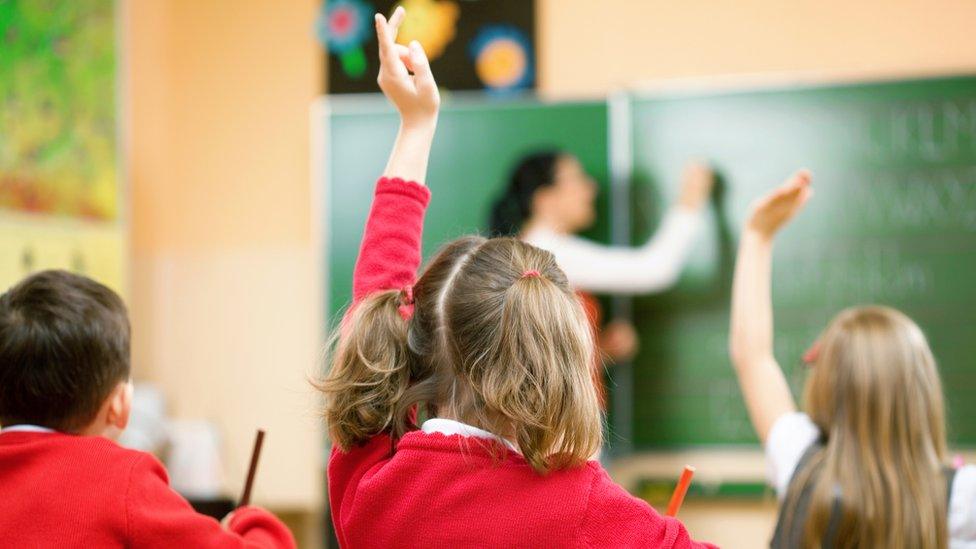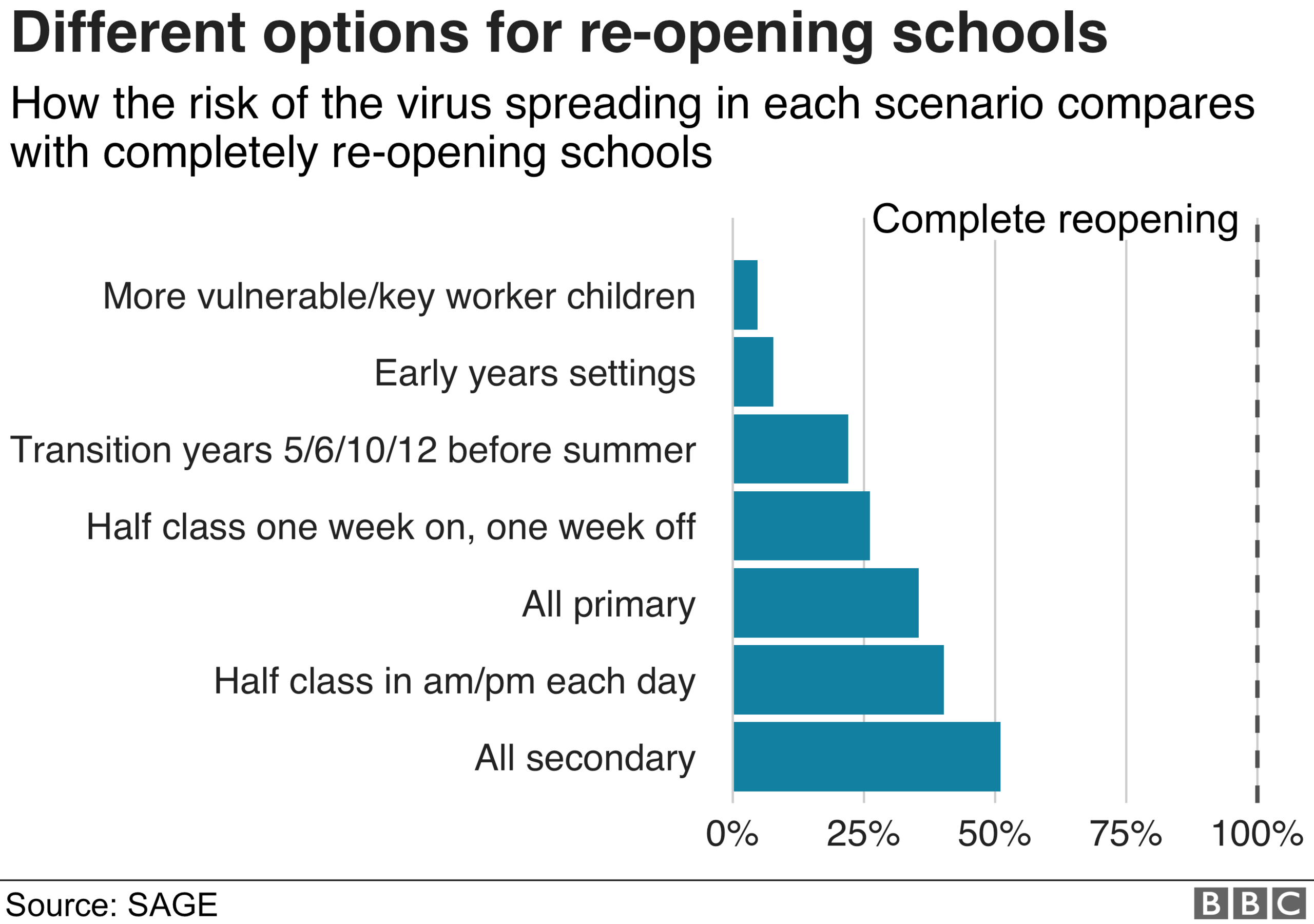Coronavirus: Key evidence on opening schools revealed
- Published
- comments

The key evidence on the safety and impact of reopening schools has been published by the government's scientific advisory group, Sage.
Sources involved said the risk of coronavirus to pupils going back to the classroom was "very, very small, but it is not zero".
They also said teachers were not at above average risk compared with other occupations.
However, there is much uncertainty throughout the advice.
There have been loud calls from within the teaching profession to see the advice, which led to England aiming to get Reception, Year 1 and Year 6 back in school from the start of June. Meanwhile, Scotland and Northern Ireland are aiming for a phased return to school in August. Wales hasn't yet made a decision.
Is it safe to reopen schools?
The documents, external say they "cannot be clear" on the extent schools could be reopened without leading to cases taking off in the UK again.
And while it is clear-cut that children are far less likely to be severely ill, there is contradictory evidence on how likely they are to be infected or to spread the virus.
One study, published this morning and considered by Sage, showed children were 56% less likely to be infected than an adult if they were in contact with an infected individual.

In the UK, three children under 15 have died with coronavirus
However, a source who was involved in the development of the advice said any activity outside the home had risks, and that the risk to children from reopening schools was considered low.
They said: "It is totally impossible to say any change has no risk at all, as long as virus is circulating in us, and there is no immunity, there is some risk.
"The risk is low and in this case it is not particularly higher than in other environments."
What did Sage advise?
Seven scenarios for opening schools were investigated by Sage and presented to politicians.
It showed opening nurseries and reception classes would have a smaller effect on the spread of the virus than primary schools. Both had a smaller effect than opening secondary schools.

How different measures may increase the spread of coronavirus in comparison to fully opening schools.

The advice says pupils coming in on alternate weeks were "good ways to stop extensive transmission chains in school".
England has not precisely followed any of the seven scenarios. Instead it is using a combination that would see Reception, Years 1 and Year 6 go back to primary school classrooms.
However, Sage did say the choice of scenario was significantly less important than maintaining other ways of controlling coronavirus - such as social distancing and hand washing.
The reports said: "A more critical issue is adherence to existing measures elsewhere in the community."
Can children catch and spread coronavirus?
Sage also stressed the next steps by politicians must be logical to keep parents on board.
"Failure to do so will influence the number of parents who are willing to send their children to school," it said.
Current estimates suggest one in 1,000 people in the UK are being infected with coronavirus every week.
Sources said the risk of reopening schools would be lowest when the number of cases is low, R is below 1 and there are systems in place to detect outbreaks and deal with them quickly.
R is the number of people each infected person passes the virus on to, on average. If it is 2 then 10 infected people would pass it onto 20 others. But if is 0.5 then 10 infected people pass it onto 5 others.
"The overall risk [from schools] is not one you would pick out as a high risk area for R, unlike dentistry for example, but it is not zero," said Sir Patrick Vallance, the government's chief scientific advisor.
Asked whether all pupils could return to school in September he said: "The lower we get number of new infections each week, the greater the chance of being able to do things."

A SIMPLE GUIDE: How do I protect myself?
IMPACT: What the virus does to the body
RECOVERY: How long does it take?
LOCKDOWN: How can we lift restrictions?
ENDGAME: How do we get out of this mess?

A rival group of scientists called "Independent Sage" earlier also argued schools should not re-open until there is the ability to track the spread of the virus and test anyone coming into contact with infected people.
It also said the risk to pupils would be halved if reopening was delayed by two weeks as a result of cases reducing further.
Prime Minister Boris Johnson has indicated that 25,000 contact tracers, able to track 10,000 new cases a day, would be in place by 1 June.
Sir David King, who leads Independent Sage, said: "It is clear from the evidence we have collected that 1 June is simply too early to go back, by going ahead with this dangerous decision, the government is further risking the health of our communities and the likelihood of a second spike."
Follow James on Twitter, external